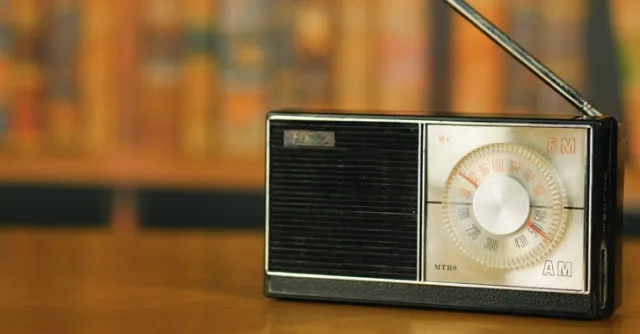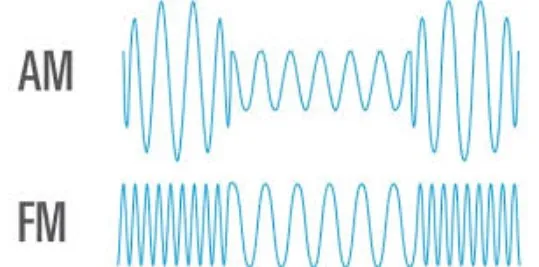In an era where digital streaming and smartphones dominate, traditional radio can sometimes feel like a relic of the past. Yet, many are only now starting to understand the fundamental differences between FM (Frequency Modulation) and AM (Amplitude Modulation) radio. The distinction goes beyond the simple static interference many associate with AM stations—there’s much more happening with how these signals are transmitted.
Understanding Radio Broadcasts: How Does It Work?

To grasp the differences between FM and AM radio, it’s essential to first understand the basics of how radio broadcasts function.
- Radio broadcasts rely on a carrier signal, which is an electromagnetic wave that serves as the foundation for transmitting sound. This carrier signal has a fixed frequency and amplitude, and when radio stations broadcast music, news, or any audio content, they encode this information onto the wave.
- The encoding is done by modulating the wave’s characteristics—either its amplitude or frequency. The radio then picks up these modulated signals and decodes them through a process called demodulation. This is what converts the encoded information back into the sound waves we hear on the radio.
Now, let’s dive into how AM and FM differ when it comes to modulating these signals.
AM Radio: What Is Amplitude Modulation?
AM, or Amplitude Modulation, changes the amplitude (height) of the carrier wave to encode information. While the frequency of the wave stays constant, the amplitude fluctuates based on the strength of the signal being broadcast.
- How AM Works: In an AM signal, the variations in wave height encode the audio data. This means that stronger signals result in taller waves, while weaker signals create shorter waves.
- Drawbacks of AM: One of the biggest issues with AM is that it is highly susceptible to interference. External factors like power lines, thunderstorms, or even nearby electronics can cause static and distortions in AM broadcasts. This is why many listeners associate AM radio with a “fuzzier” or “noisier” sound.
- Advantages of AM: Despite its interference issues, AM has one significant advantage: its ability to travel long distances. AM radio waves have longer wavelengths, allowing them to penetrate buildings and travel over greater distances, especially at night. This is why AM radio is still used for emergency broadcasts and in rural areas where FM signals may not reach.
FM Radio: What Is Frequency Modulation?
FM, or Frequency Modulation, takes a different approach by modulating the frequency of the carrier wave instead of the amplitude. The result is a more stable and higher-quality signal.
- How FM Works: With FM, the frequency of the wave changes to represent the audio data, while the amplitude remains constant. This modulation makes FM signals less vulnerable to interference caused by environmental factors such as electrical equipment or weather conditions.
- Superior Sound Quality: FM signals offer better sound quality than AM because they are less prone to distortion. FM’s broader bandwidth also allows for the transmission of higher fidelity audio, making it ideal for music broadcasts where sound clarity is a priority.
- Drawbacks of FM: While FM provides superior audio quality, its shorter wavelengths mean the signal doesn’t travel as far as AM. FM broadcasts are typically limited to line-of-sight distances, meaning they struggle to penetrate through obstacles like tall buildings or mountains.
Why AM Radio Is Still Used Despite Its Drawbacks

Given FM’s superior sound quality, you might wonder why AM radio is still around. The answer lies in AM’s extensive range and its ability to cover large areas. AM waves can travel farther, especially at night when atmospheric conditions allow the signal to bounce off the ionosphere and reach even more distant locations. This makes AM an ideal choice for emergency broadcasts, where reaching as many people as possible is critical.
- Emergency Uses: AM radio is commonly used for public safety announcements, especially in disaster-prone areas, because of its reliable coverage. It also remains popular in rural and remote regions where FM signals are weaker or nonexistent.
AM vs. FM: Key Differences at a Glance

- Modulation Type:
- AM: Modulates the amplitude (height) of the wave.
- FM: Modulates the frequency (number of waves per second).
- Interference:
- AM: Highly susceptible to interference from electrical sources, power lines, and weather.
- FM: Less vulnerable to interference, offering clearer sound.
- Sound Quality:
- AM: Lower sound quality, more static and distortion.
- FM: Superior sound quality, especially for music.
- Range:
- AM: Longer range, ideal for rural areas and nighttime broadcasts.
- FM: Shorter range, better suited for urban areas.
Reddit Users Chime In: Explaining FM and AM Differences
Recently, the differences between AM and FM became a topic of discussion on Reddit, where users tried to break down the concepts in simple terms:
- One user wrote: “FM is frequency modulation of signal, and AM is amplitude modulation.”
- Another user expanded: “On FM, the radio waves vary in how frequent they are generated, while AM waves come with the same timing but vary in size.”
- Another shared a personal insight: “I had this in my Telecommunications Systems class, and now it makes so much more sense!”
These discussions highlight how many are just beginning to understand the technical differences that affect what they hear when tuning in to either AM or FM stations.
Modern Relevance: How FM and AM Hold Up in the Digital Age

Even with the rise of digital streaming services like Spotify and Apple Music, AM and FM radio still hold an important place in modern communication.
- AM’s Broad Coverage: AM’s ability to reach distant and remote areas makes it invaluable for emergency broadcasts and rural programming.
- FM’s Quality for Music: FM remains the go-to for music lovers who prefer local radio stations, offering better audio clarity for songs, talk shows, and news programs.
In today’s fast-paced digital world, understanding the difference between AM and FM radio can help listeners make more informed choices about how they consume broadcast content.
Conclusion: Appreciating the Differences Between AM and FM Radio
AM and FM radio might seem outdated compared to modern streaming services, but they each play unique roles in communication. AM’s long-range capabilities make it ideal for reaching remote listeners and delivering crucial emergency broadcasts, while FM’s superior sound quality makes it the preferred choice for music and talk radio.
As technology continues to evolve, both forms of radio will likely remain relevant, providing distinct advantages depending on the situation. Whether you’re tuning in for music or critical information, understanding how AM and FM work can deepen your appreciation for the airwaves you rely on.


